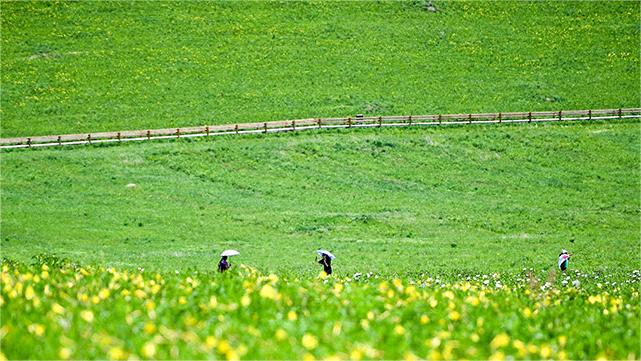Draft law revision aims to better balance cultural relics utilization, protection
BEIJING, June 27 (Xinhua) -- The realm of museum cultural creativity has recently witnessed unparalleled levels of innovation and competition. In Lanzhou, the capital of northwest China's Gansu Province, a new gallery seamlessly blends cultural gems with regional flair through diverse exhibits, themed beverages, and creative products.
At the art and life gallery affiliated with the Gansu Provincial Museum, the iconic Bronze Galloping Horse comes alive as a clever combination of dolls and graffiti adorn the walls. Meanwhile, millennia-old "colorful pottery jars" have been made into irresistible edible treats.
Since its soft opening in early June, the gallery has welcomed no less than 5,000 visitors each day, with many of its creative mascot dolls selling out as soon as they hit the shelves, said Cui Youxin, head of the cultural and creative center of the Gansu Provincial Museum.
In recent years, many Chinese museums have embraced a quest for creativity by combining art, history, and innovation. This has resulted in the transformation of cultural products and the creation of dynamic spaces that bring together diverse industries.
Such moves echo stipulations in the draft revision of the country's Law on Protection of Cultural Relics, which was submitted to an ongoing session of the National People's Congress (NPC) Standing Committee for the second reading.
China, a nation graced with a civilization dating back 5,000 years, boasts a wealth of cultural heritage assets. According to official data, as of October 2023, there were 57 world heritage sites and over 760,000 immovable cultural relics in China, including 5,058 major sites protected at the national level.
Meanwhile, China had 108 million pieces (sets) of movable cultural relics.
"Currently, in the field of cultural heritage utilization, there exist problems such as a low level of openness, limited means of utilization, and insufficient social participation, as well as issues of excessive development and improper utilization," said Zhu Bing, former head of the cultural office of the NPC's Education, Science, Culture, and Public Health Committee.
To address these issues, the second draft introduces provisions aimed at exploiting and effectively utilizing the value of cultural relics to bring them to life, with the aim to pass on the fine traditional Chinese culture, foster a strong sense of community for the Chinese nation, and enhance the international appeal of Chinese culture.
Gao Yafang, dean of the tourism school at Lanzhou University of Arts and Science, advocates for the power of creativity to liberate artifacts from museum shelves, engaging young people to actively inherit the rich legacies of the country.
"It's when cultural treasures come alive and engage young people that our heritage truly embarks on a sustainable and thriving voyage," Gao said.
The draft also underscores the importance of comprehensive surveys of cultural relics and constantly enhancing protective measures, thereby striking a better balance between utilization and protection of cultural relics.
"When it comes to cultural relic work, preservation stands as its cardinal principle," said Zhu Bing.
The draft stiffens protection for immovable relics and insists on rigorous preservation amid tourism and development activities in historic neighborhoods and villages, safeguarding their cultural authenticity.
Photos
Related Stories
- China mulls law revision to step up protection, management of cultural relics
- The Roman dome: A construction marvel that continues to shape modern architecture
- Mortise and tenon: The ancient Chinese secret to nail-free, earthquake-resistant architecture
- Over 900 pieces of relics retrieved from shipwrecks in South China Sea
- China heightens legal protection of historical imperial resort
Copyright © 2024 People's Daily Online. All Rights Reserved.









